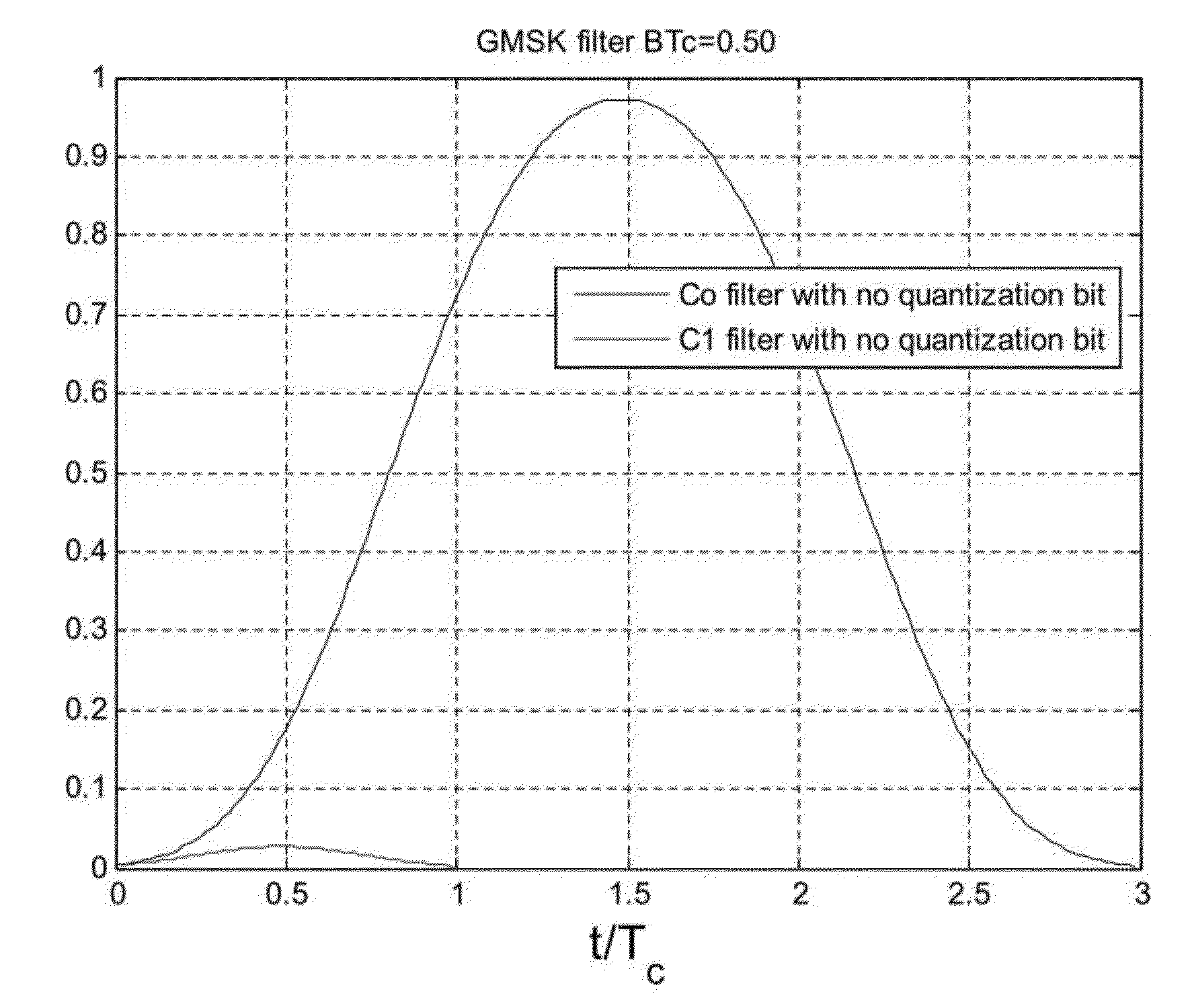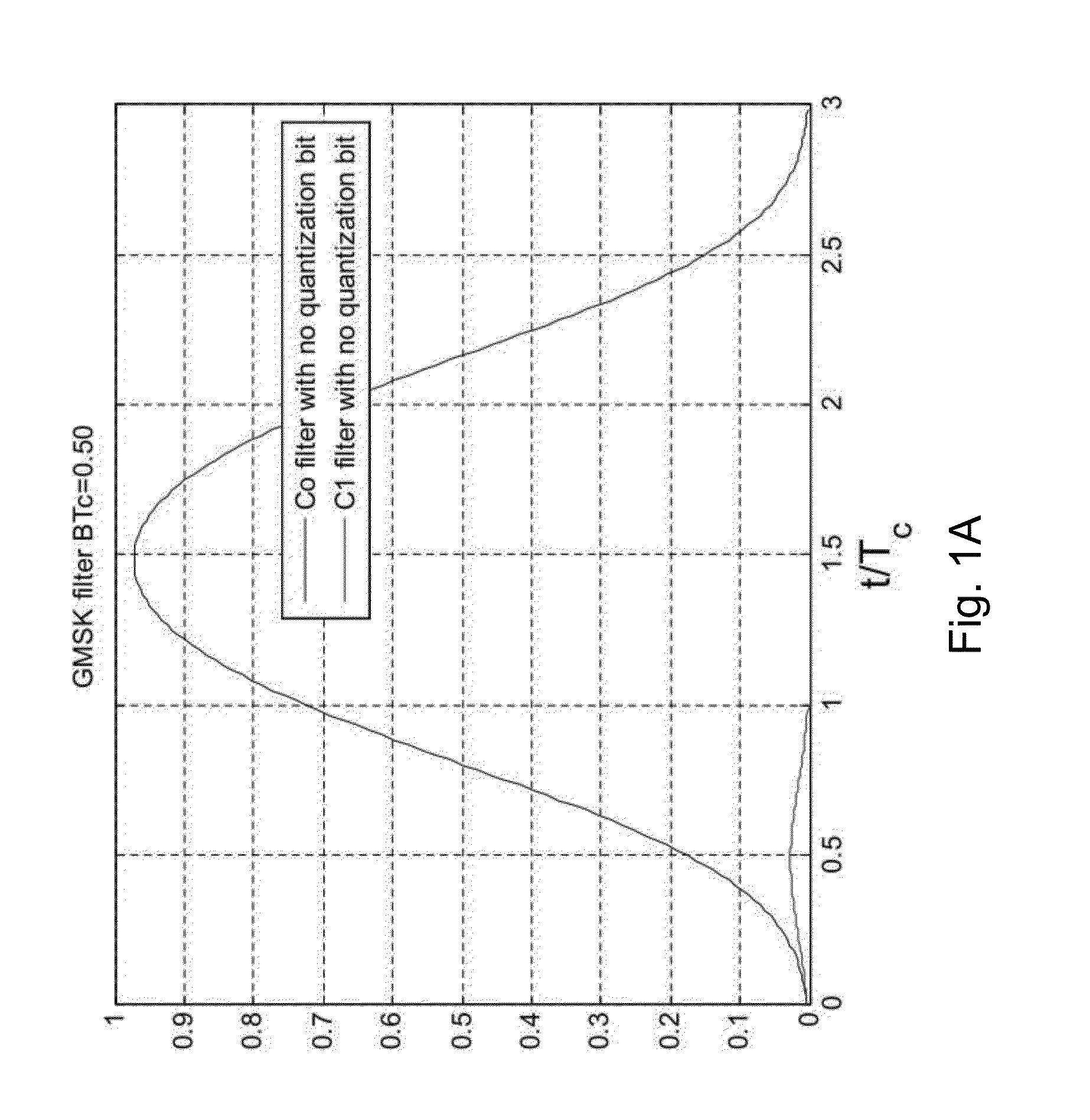Spread Spectrum GMSK Signals
a technology of spread spectrum and signals, applied in frequency-modulated carrier systems, modulated carriers, transmission systems, etc., can solve problems such as inter-chip interference and bit modulation degradation, and achieve the effect of reducing the reduction of snir
- Summary
- Abstract
- Description
- Claims
- Application Information
AI Technical Summary
Benefits of technology
Problems solved by technology
Method used
Image
Examples
Embodiment Construction
[0039]In the following, functionally similar or identical elements may have the same reference numerals. Absolute values are shown below by way of example only and should not be construed as limiting the invention.
[0040]In the following, the PSD and CCF of a typical GMSK CDMA signal are described for different BT values of the GMSK filters used for generating the GMSK CDMA signal. Also, the problem of ICI caused by the GMSK filters is explained with regard to the CCF and the tracking performance. The following description is related to a GMSK CDMA signal as it is used for a GNSS such as the modernized GPS or GALILEO according to the new signal design with a pilot channel, which does not contain data (and, thus, is a data less channel in terms of data usable for positioning or navigation purposes), and a data channel for transmitting data usable by GNSS receivers for position determination. Even if the following description is related to the usage in a GNSS, it can in principle be us...
PUM
 Login to View More
Login to View More Abstract
Description
Claims
Application Information
 Login to View More
Login to View More - R&D
- Intellectual Property
- Life Sciences
- Materials
- Tech Scout
- Unparalleled Data Quality
- Higher Quality Content
- 60% Fewer Hallucinations
Browse by: Latest US Patents, China's latest patents, Technical Efficacy Thesaurus, Application Domain, Technology Topic, Popular Technical Reports.
© 2025 PatSnap. All rights reserved.Legal|Privacy policy|Modern Slavery Act Transparency Statement|Sitemap|About US| Contact US: help@patsnap.com



